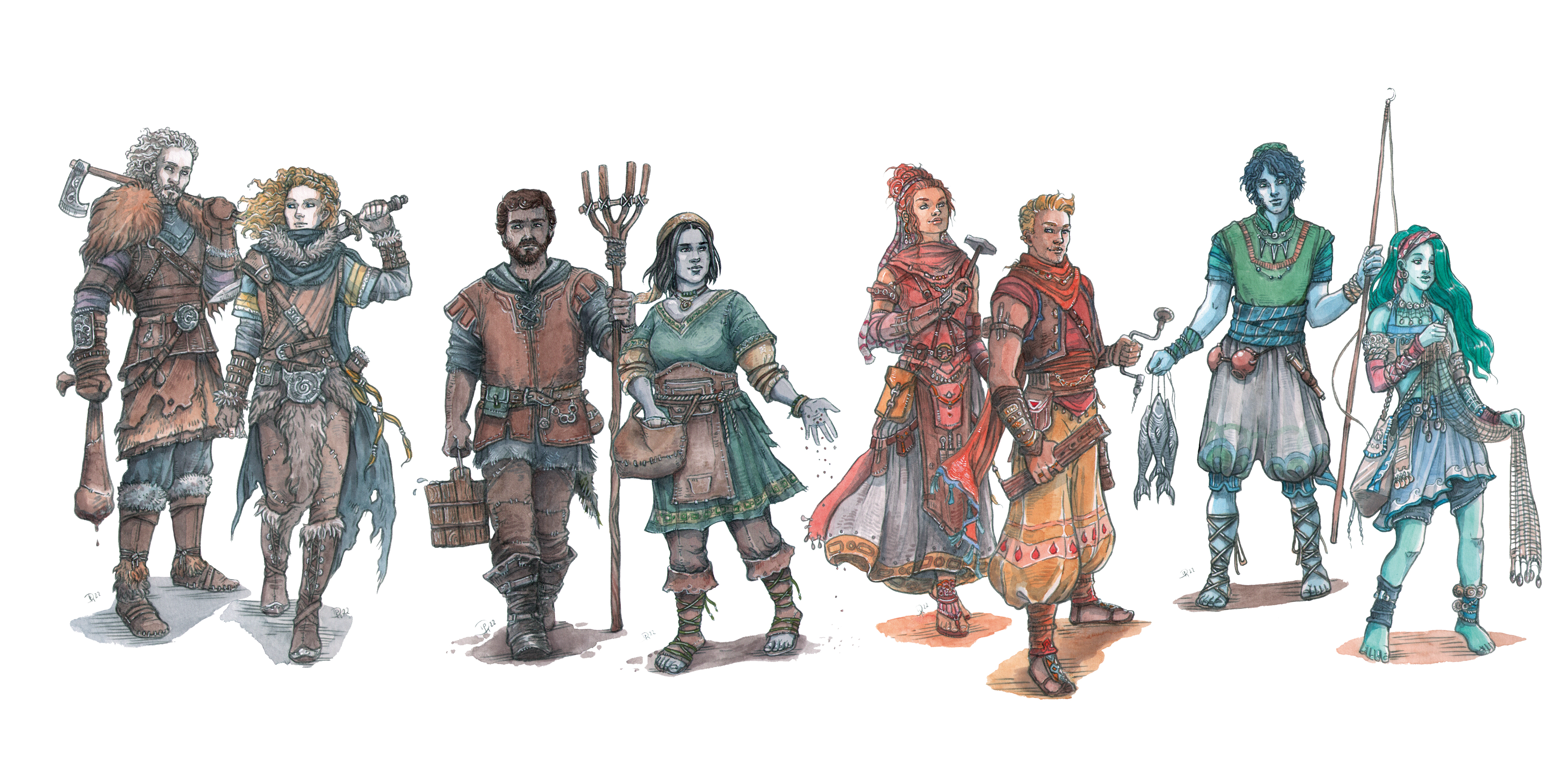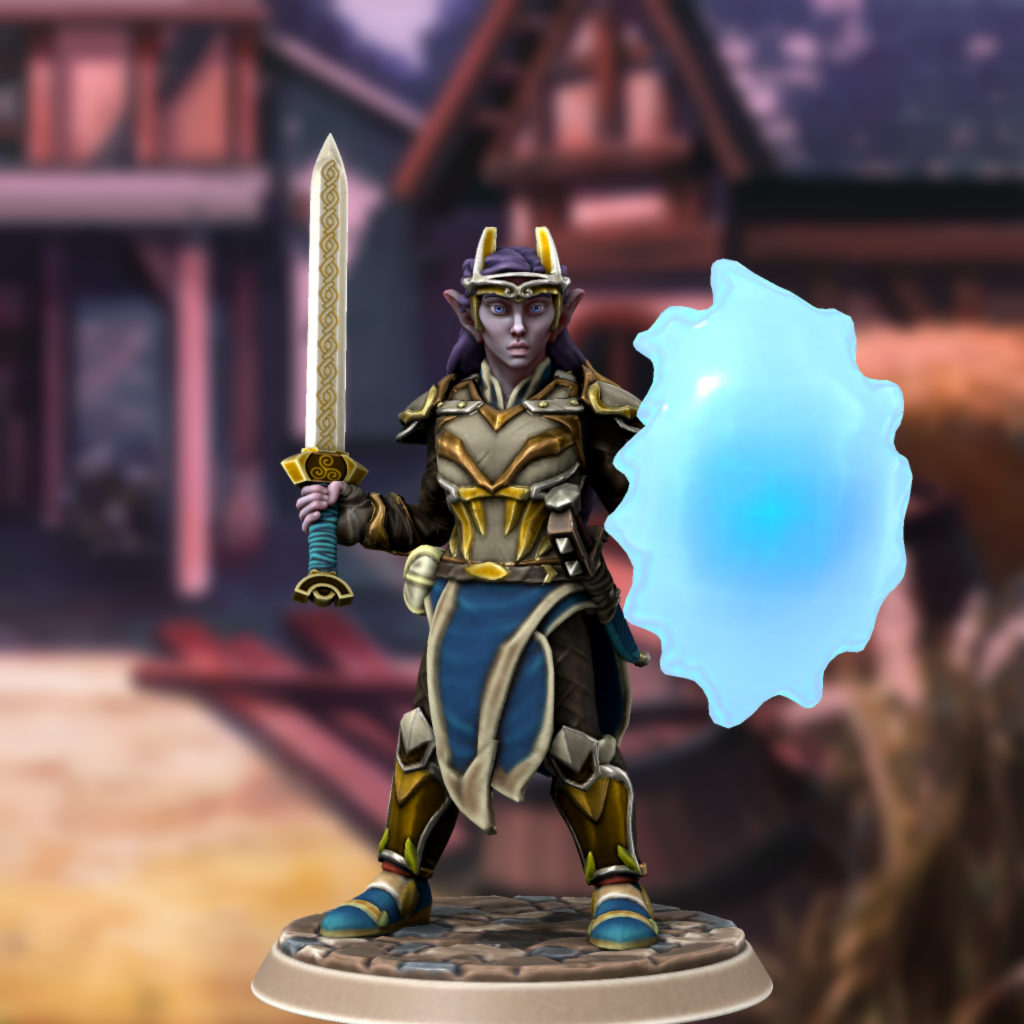Scarterra Advanced Primer
Age Before Ages
In the Age Before Ages, the primordial god Turoch created Scarterra to act as a sort of soul farm, so he could could consume all mortals to satiate his endless hunger. Eventually, Turoch's greatest servants rebelled against him, orchestrating the Divine Rebellion.
Turoch's victorious former servants became the new gods of Scarterra, now known as the Nine. They forged weapons and tools out of Turoch's cooling corpse known as Divine Trophies. The Nine had a theoretically permanent agreement on how to share the management of the world called the Compact which among other things, set up aspects of nature they were responsible for known as the Dominions.
The First Age
The First Age, was known as "the Age of Dragons". The strongest mortal souls that survived the Divine Rebellion were formed by the Nine into the first dragons and the Nine intended dragons to become the dominant mortal creature in Scarterra. Originally, the ancient dragons were little more than powerful automatons to eat, sleep, and worship the Nine, but the goddess Nami gave dragons and by extension all mortal races that would follow them the Gift of Free Will. Once free to choose how to worship, Nami became very popular for giving mortals freedom. Not wanting to be outdone, the rest of the Nine bestowed their own Gifts to mortalkind. The Gifts were things like agriculture, metal working, and music. The building blocks of civilization and culture. With the Gifts of the Nine, their great strength, magical power and intellect, the dragons created awe inspiring kingdoms of massive towers and monuments to both the Nine and themselves.Once imbued with Free Will, Greymoria thought she deserved to be worshiped even without bestowing a Gift because her contribution to the Divine Rebellion was greatest. Dragons liked the Gifts of the Nine by this. Also, most dragons (like most younger mortal races to follow) thought Greymoria "contribution" to the Divine Rebellion was utterly terrifying. Many stopped worshiping Greymoria altogether. Others only worshiped Greymoria is fearful whispers.
Greymoria did not like this, so she created dozens, perhaps even hundreds of new mortal races and used these new races as cannon fodder to attack the dragon kingdoms. Many of these races of Greymoria's Children got tired of being fed into the proverbial meat grinder rebelled against the role assigned to them by their Dark Mother. This caused Greymoria to punish some of them.
The First Unmaking
Millions of rogue elementals were spawned and the elementals began to fight other. This caused the continents to split, volcanoes to erupt, and massive seemingly unending hurricanes among stranger natural disasters. This event was known as the First Unmaking. The natural disasters killed millions mortals and beasts as they were crushed, drowned, burned, or asphyxiated. The massive ecological ruin led to mass starvation. When the last elemental finally disappeared back the Elemental Plane. 95% of all dragons were dead and many species were driven to extinction. The surviving dragons frequently became bitter loners. Much of the treasures of the First Age were lost, but enough treasure survived that most of the surviving dragons managed to create sizeable hoards of ancient wealth. Future generations of dragons became even more miserly and treasure loving than their ancient ancestors. It is said that dragons can barely cooperate with other dragons long enough to mate and perpetuate their species, but perpetuate their species they did...barely.The Second Age
The Nine decided to create a new race to inherit Scarterra and rule over the Second Age rather than to rebuild the dragons to their former power. The Nine collectively created elves hoping that mortals with shorter lifespans and less raw might would be less likely to destroy the whole world.Finally Greymoria opted to give a Gift to mortalkind. The Gift of wizardry. This was both to win favor with the elves and as a parting shot against the dragons by giving elves a potential weapon to use against the remaining dragons who did not all meekly accept elves as the new dominant race.
Unfortunately, elves turned away from worshiping Greymoria anyway, at the very least they were not worshiping her as much as Greymoria believed she deserved. Like in the First Age. Greymoria created new races and mystic curses to punish those who shunned her. Even more so than before, this had mixed results. Even more so than before, this spurred the rest of the Nine to create a small number of new races of their own.
The Second Unmaking
After Turoch's destruction, his essence, his hunger, lingered on in an extra planar realm known as the Void. Sometimes the Void spawned Void demons who hungered to consume mortal souls but the The Barrier, erected by the Nine and maintained by the god Phidas kept them at bay. That is until the elven wizard king ventured into the Void, unleashed unstable arcane magic there, and accidentally breached the Barrier. This allowed millions of Void demons to enter the mortal plane. Led by the eight Demon Lords, the Void demons and their undead minions sought to extinguish all mortal life on Scarterra. This event was known as the Second Unmaking. The Void Demons mostly left the plants and animals alone, only interested in slaying creatures that had fully mortal souls but a side effect of the Barrier being damaged was that winters became longer and harsher. With many farms abandoned or destroyed, starvation killed almost as many Scarterrans as Void Demons did. By the time the last Demon Lord was slain, over 90% of all mortal life was gone and the populations of wild animals and plants was roughly cut in half.The Third Age Begins
Only three large groups of elves survived the Second Unmaking. One group survived by dedicating themselves to Greymoria and gaining all her godly support. Their descendants are now known as dark elves and their homeland is known as Kahdisteria.
Another group survived by hiding in their forest and making alliances with mortal races of forest dwellers. Their descendants are now known as wood elves and their homeland is known as the and of Codenya.
The third major group of elf survivors managed to fortify themselves on an island with many geographic advantages to make it easier to fend off Void demon armies. Their descendants are now known as grey elves and their homeland is known as the Elven Empire though whether it qualifies as a true empire is debatable.
There were smaller groups of elven survivors but overtime most of them either died out or assimilated into one of three aforementioned nations.

Eight commissioned human portraits by Diana Rahfoth







Comments